Visiting Fukushima Disaster Area. There are some things which you simply don’t really want to score well at. Avoiding the highest rating within the International Nuclear Event Scale is a worthwhile endeavor. Chernobyl was given the highest classification, Level 7. Only one other nuclear disaster received the same calamitous rating and that was the Fukushima Daiichi nuclear catastrophe. Level 7 is succinctly described as “disaster”. The scale is logarithmic, meaning that each increasing level is the equivalent to ten times as severe as the previous level.
The Tohoku earthquake and tsunami on March 11, 2011 precipitated the disaster at Fukushima Daiichi Nuclear Power Plant. The reactor detecting the earthquake automatically shut down the fission reactions. Emergency generators kicked-in, supplying needed coolant to the reactors. Tragically, 46 minutes later, the tsunami delivered a 14-meter wave which knocked out the emergency generators. The result was three nuclear meltdowns and three hydrogen explosions at Units 1, 2, and 3. Radioactive contamination was released resulting in the creation of a 20-kilometer radius no-go zone with over 150,000 being evacuated. The Japanese government has a 30 to 40-year plan to decontaminate the area and decommission the plants. The cost of this accident for the government is projected to be nearly $200 billion. Thankfully, no one was killed in the initial aftermath of the incident. As of now, there is only one official death from cancer which has been attributed to this catastrophe.
The global travel industry is immense with some estimates at over $7 trillion. With a market so vast, travelers are inspired to explore for a vast array of reasons. One growing segment of the tourism industry is dark tourism. Dark tourism is defined as any travel associated with death, suffering, the macabre, or disaster. Examples would be visiting the Killing Fields of Cambodia, the Rwandan Genocide Memorials, or visiting the world’s worst nuclear accident, Chernobyl. The idea is not to revel in these tragedies or take selfies, but the purpose is to learn about the history and honor the victims.
I visited Chernobyl several years ago, spending two days and sleeping over in the Chernobyl Exclusion Zone. This debacle was monumental. It is estimated that thousands will die due to the exposure to radiation, over 150,000 people had to leave their homes, the fiasco caused untold damage to the lands, and Chernobyl contributed to the fall of the Soviet Union. When I explored this area, I was able to gather a sense of how calamitous this accident was.
During my recent visit to Japan, I decided I wanted to learn more about the effects of the Fukushima Daiichi nuclear disaster. I joined Japan Wonder Travel (as an invited guest). You can join a group tour or arrange a private tour to Fukushima. They have been in business for over five years and have been offering the day trip to Fukushima for a year and a half. They have nearly 900 reviews on TripAdvisor, with 98% giving them 5 stars (as of September 2019). That’s impressive.
Visiting Fukushima Disaster Area
The day trip is truly a full day, lasting 12 hours plus. We left at 8am and returned approximately at 9 pm. It takes over three hours in the private van to reach Fukushima. While in the van, my guide, Chihiro, briefed us on our itinerary. Our group of eight would have several stops during our packed day. We would visit the partially abandoned city of Namie. We met Mr. Yoshizawa, an interesting character. There was a stop at the port city of Ukedo. We then drove via Rt 6, an abandoned area where we could see the Fukushima Daiichi plants in the distance. Our final stop was Tomioka, another partially abandoned town.
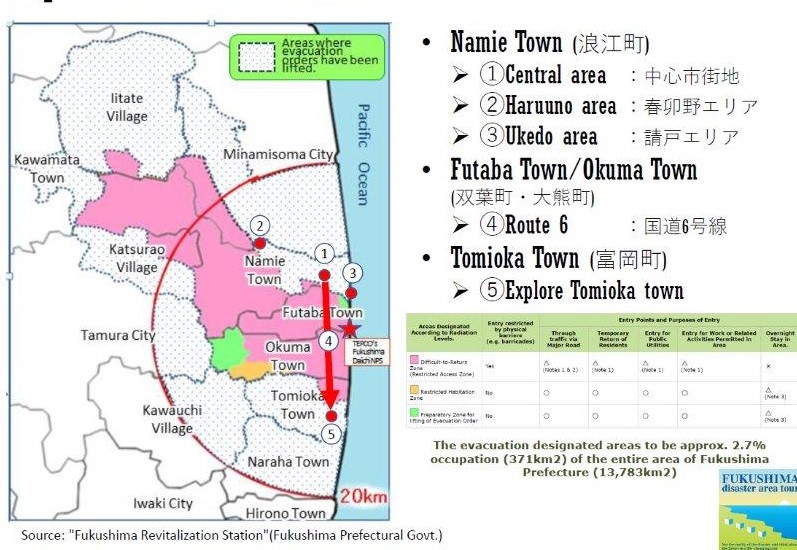
And, Chihiro handed out our own personal Geiger counter, which measures radiation. Often, there comes a point when you second guess yourself when traveling to off-the-beaten-path location. Is it safe, secure? When driving to Fukushima, I noted multiple signs on the highway. Except these signs were a bit different than a typical sign noting the number of kilometers to the next exit. These signs had digital readouts broadcasting the radiation levels. This is not too reassuring.
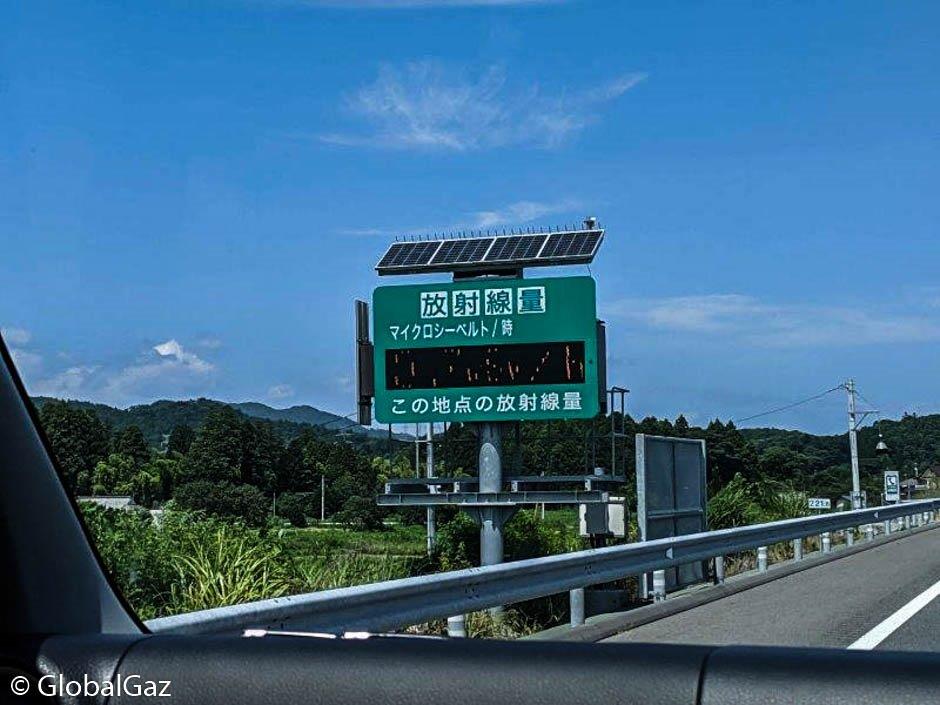
Chihiro overviewed the risk of radiation with this chart. She pointed out that you would receive .1 mSv of radiation when flying from New York City to Tokyo, yet during our day tour we would only receive on average 0.001 mSv of radiation, about a one hundredth of the trans-Pacific flight.
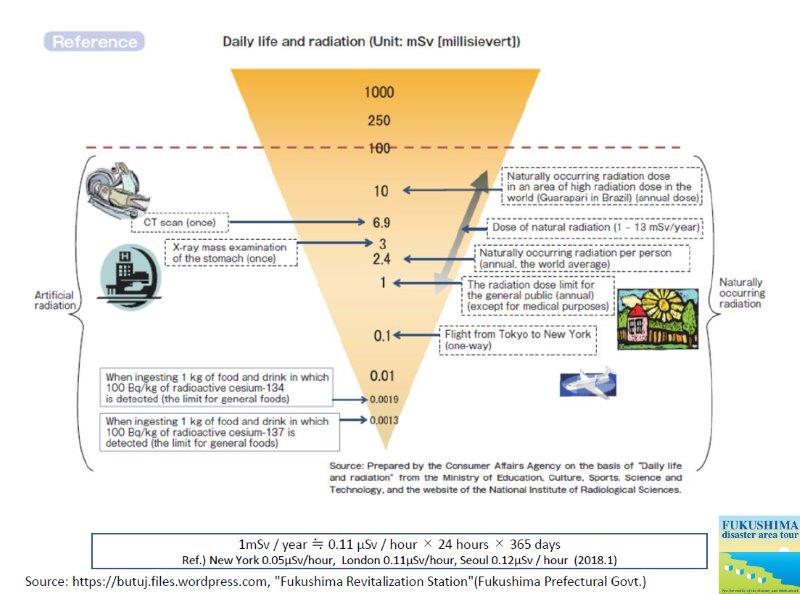
Namie
Peering into the window of this abandoned restaurant. Kitchen paraphernalia lay scattered around the room. The town of Namie lay in a state of partial abandonment.
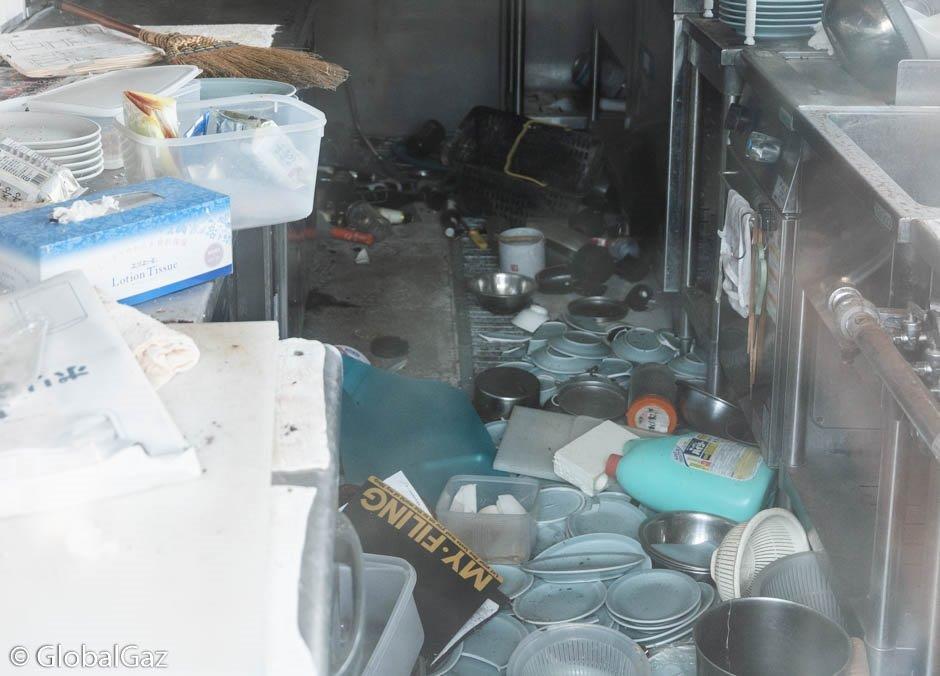
Checking out a large elementary school. This was a bit spooky, as the children were abruptly evacuated from the school, leaving their umbrellas and shoes as they had placed them from that morning. Japanese children wear slippers known as Uwabaki in the school.
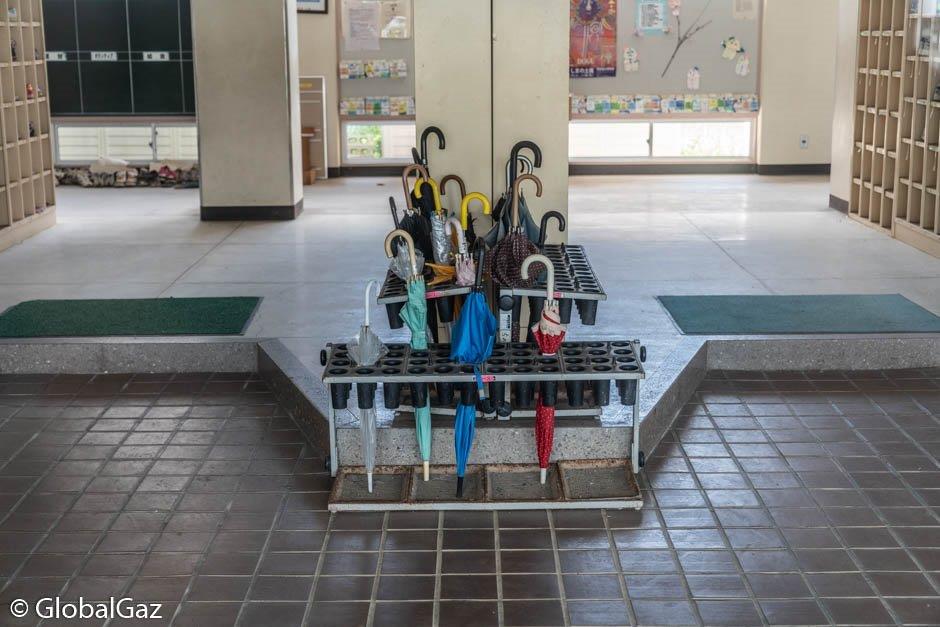
The streets are empty, and the foliage and greens reclaim the empty spaces.
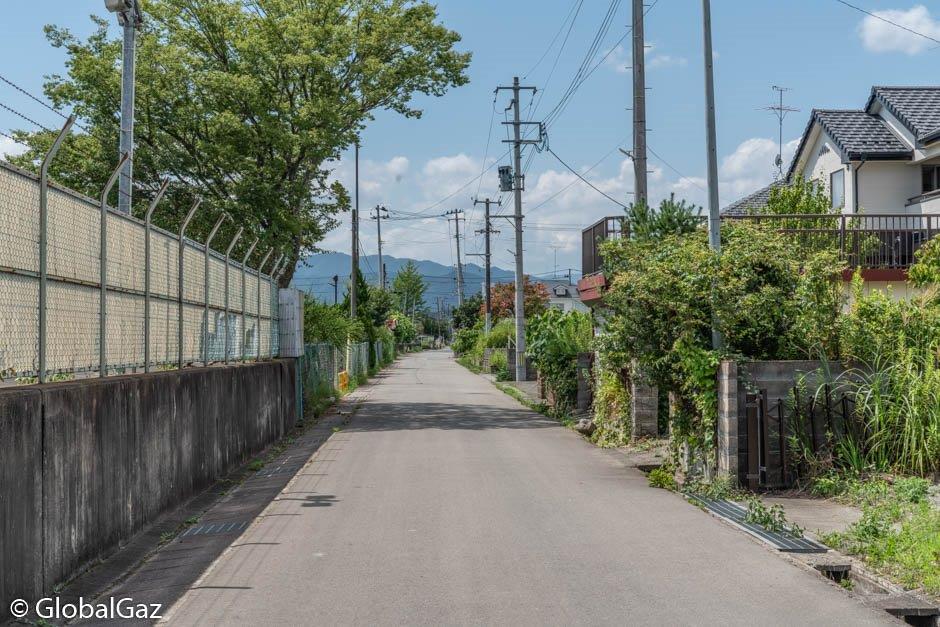
Mr. Yoshizawa
“I’m a cowboy, a cow terrorist, a kamikaze!” states Masami Yoshizawa. His farm stood in the shadow of Fukushima, only 14 km away. He illegally returned to his farm to care for his cows. The government was requiring that animals be put down. Yoshizawa is now an activist, fighting against nuclear power in Japan.
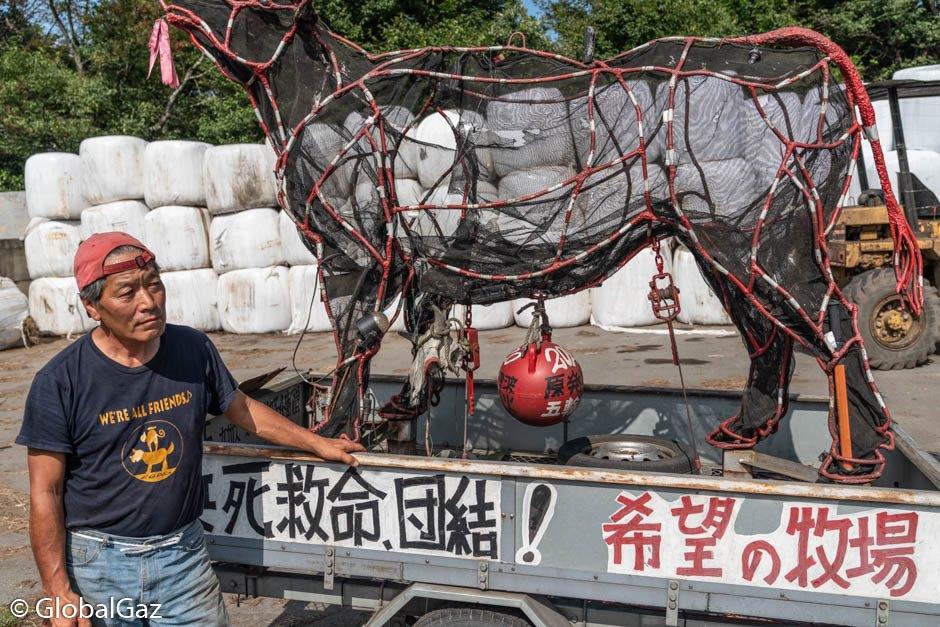
Yoshizawa provides an overview of his experiences during the disaster and what he has been doing since to protest nuclear energy.
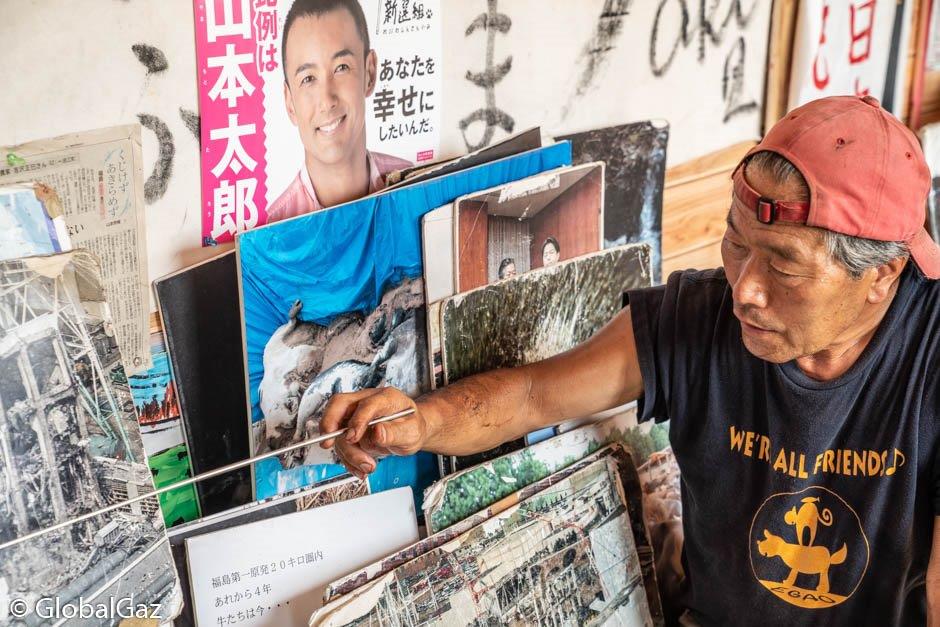
Ukedo
Ukedo Elementary School stood only 200 meters from the Pacific Ocean. The school was given a 50-minute warning that a Tsunami was barreling down on their school. Thankfully, teachers decided to evacuate the 80 or so pupils and head to a nearby hill for safety.

Japan is in the process of building a 400 km long wall on the coast to prevent the next tsunami from causing damage. The wall will reach heights of 12 meters. This $7 billion barrier is constructed from cement and is quite an eyesore. This is not nearly a perfect solution since the tsunami of 2011 reached heights of 42 meters.
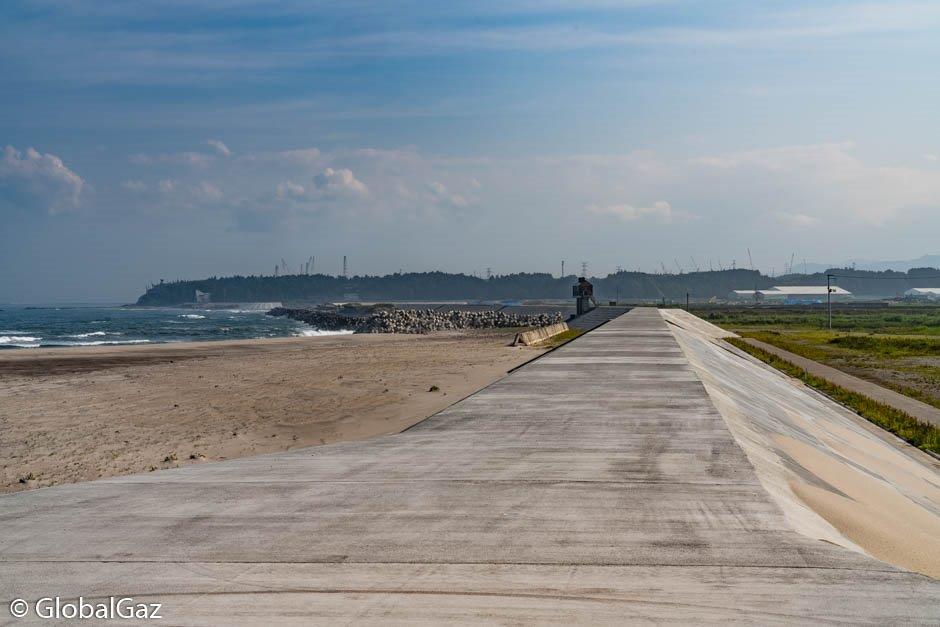
Route 6
We sped down Route 6, which is an abandoned area. We were not allowed to stop. Many buildings line the street, empty and desolate.
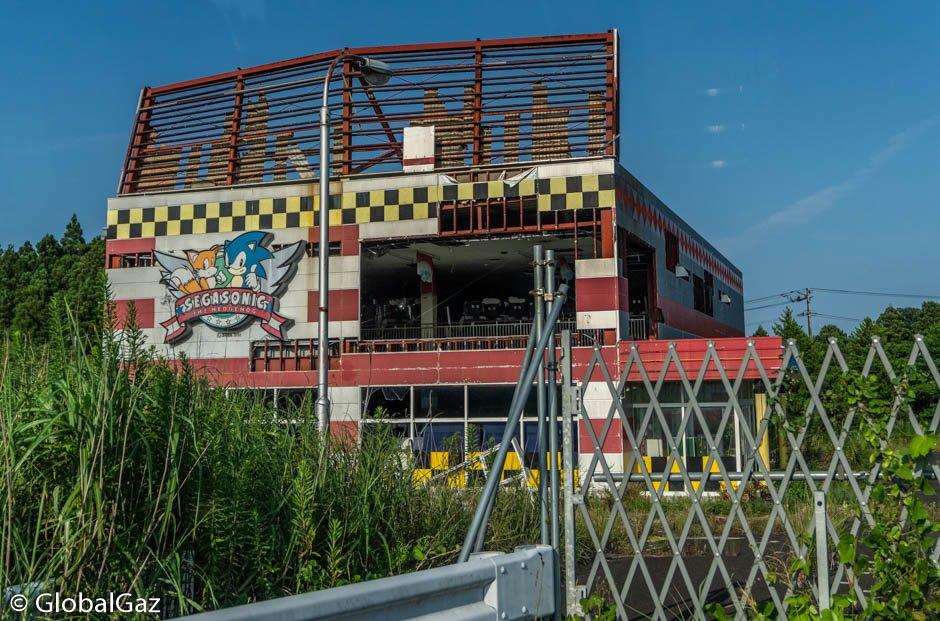
And then there were more.
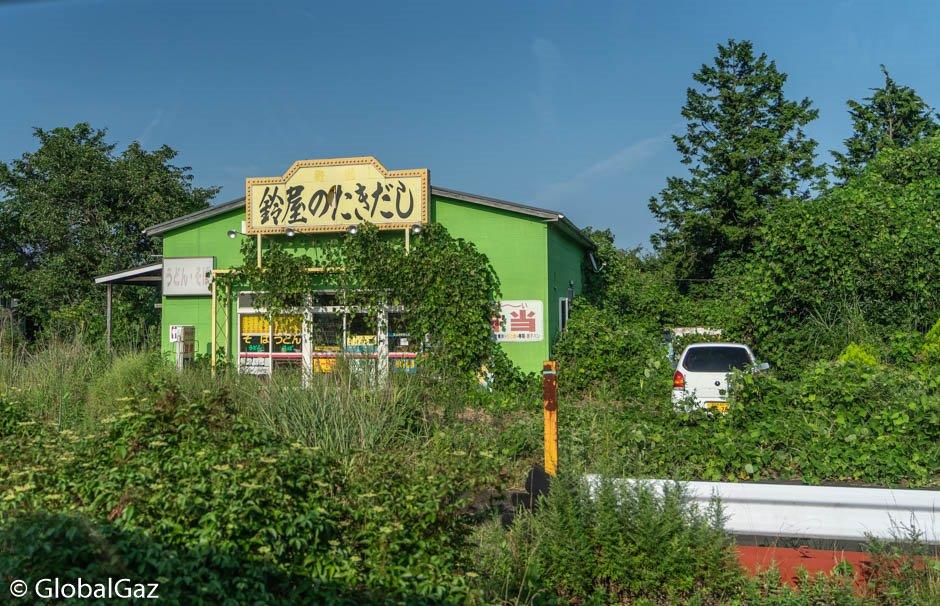
The government has fenced or gated in many of these buildings.

We stopped for less than five minutes to snap some pictures of the Fukushima Daiichi plants in the distance. And two policemen greeted us to see what we were doing.
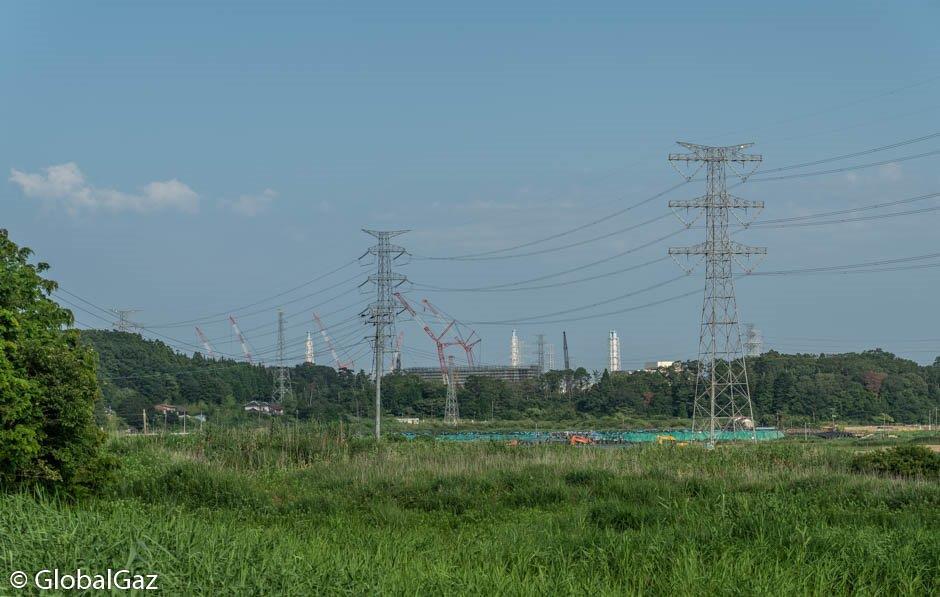
Thousands of bags are filled with contaminated soil. The green tarp is covering even more bags full of contaminated soil.
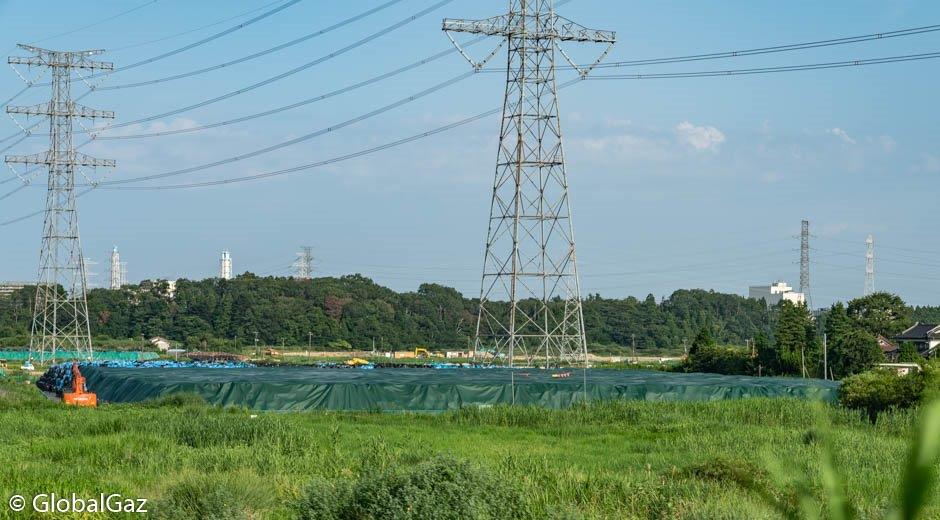
Tomioka
Our last visit was the town of Tomioka was devasted by both the earthquake and the tsunami. The entire town was evacuated on March 12, 2011 since it is located within the 20 km exclusion radius. The town is partially populated, but some areas still remain off-limits due to the higher levels of radiation.
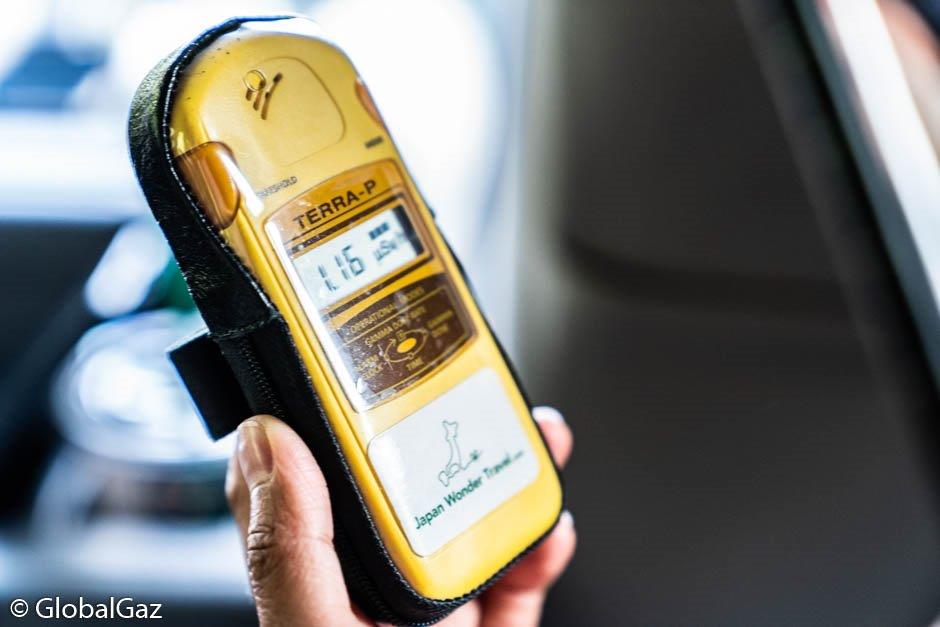
We explored an area of abandoned homes. Wildlife has taken over in some cases. A damaged and solitary car sits alone in a parking lot.
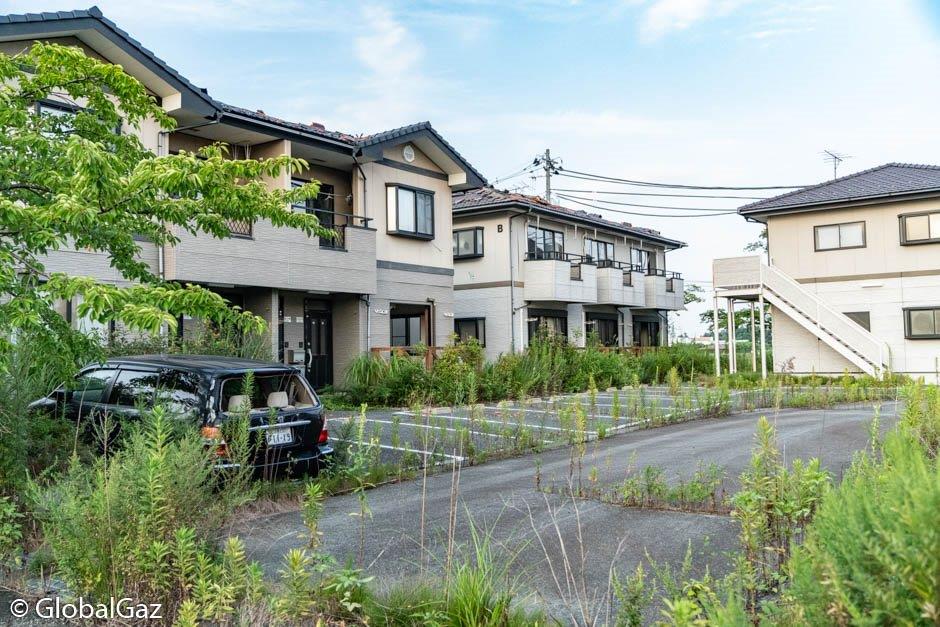
Homes sit gated and boarded off from the public. Signs warn visitors.
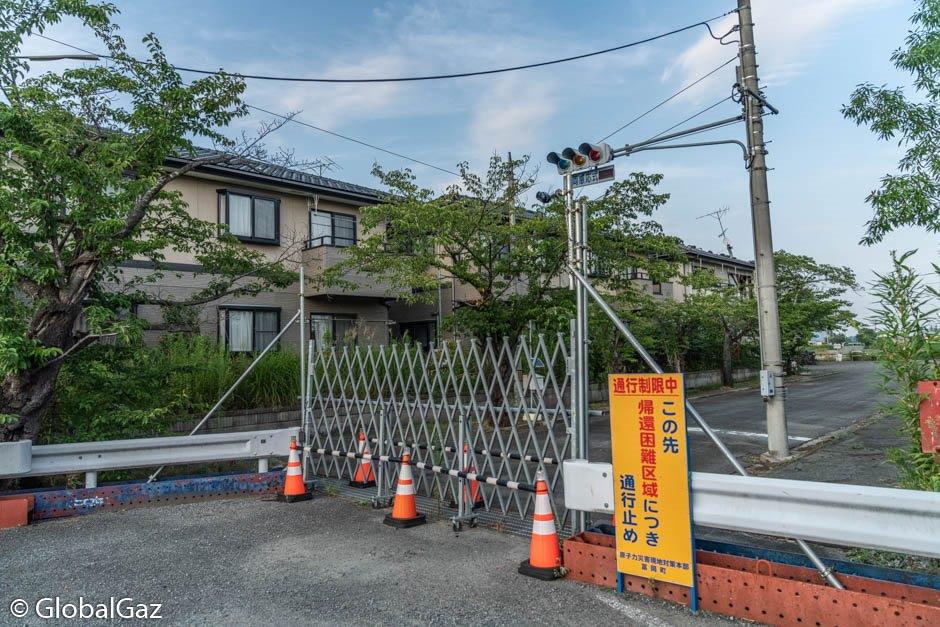
A Geiger counter blinks out the radiation level. It would be a little bit disconcerting to have this sign next to my home.
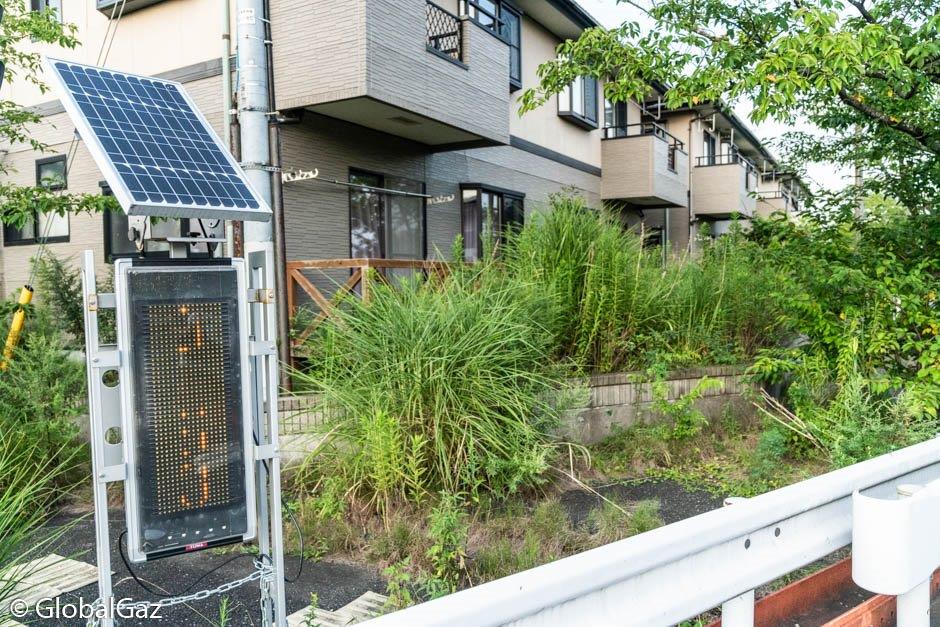
The streets are eerily empty. A sign of the devastation that the Fukushima Daiichi caused.
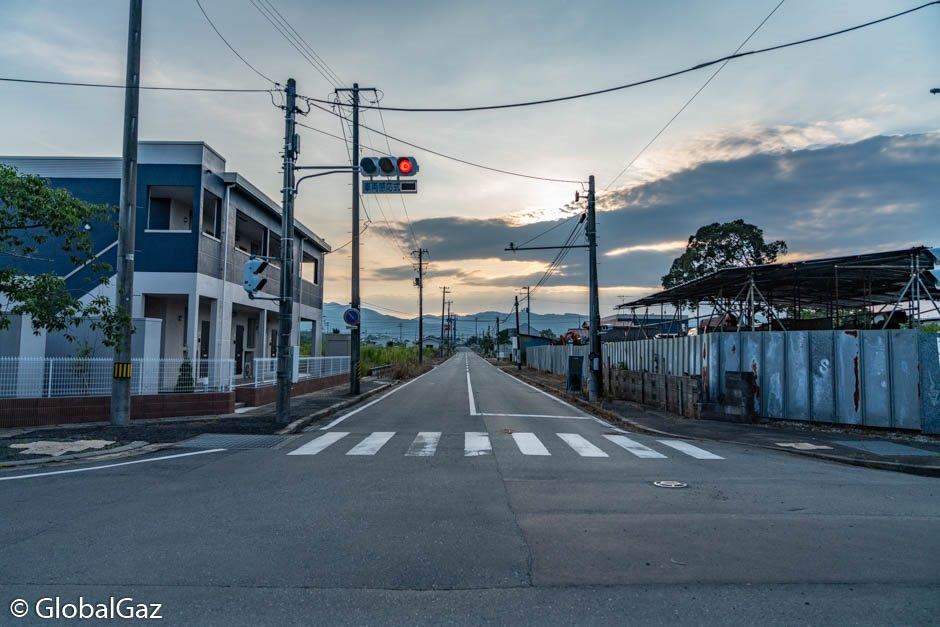
Visiting Fukushima Disaster Area
Check out my other posts on Japan; including must-see landmarks, non-seafood options, and eating kuskikatsu in Osaka.
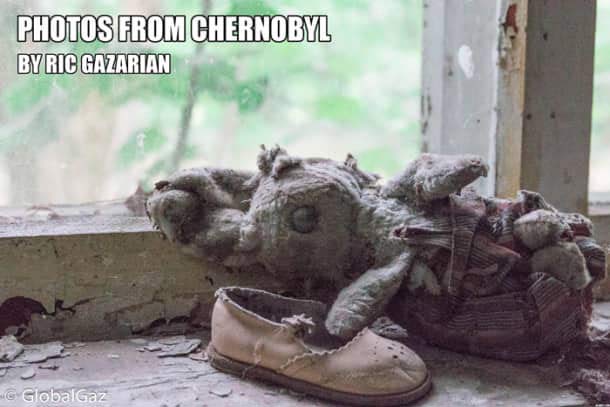
Photos From Chernobyl
Sign up to receive your free copy of Photos From Chernobyl. Over 100 photos from the Chernobyl Exclusion Zone.

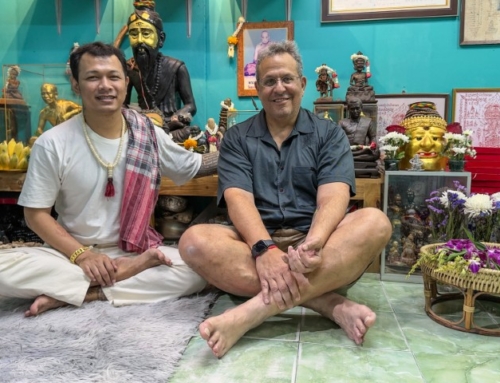
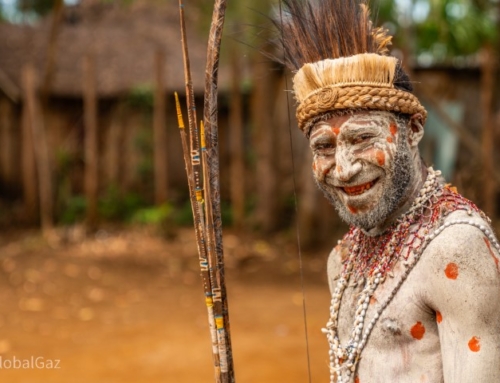
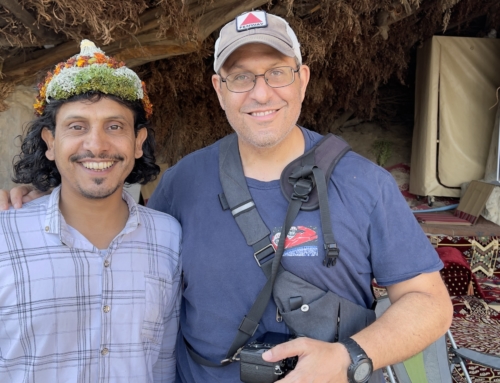
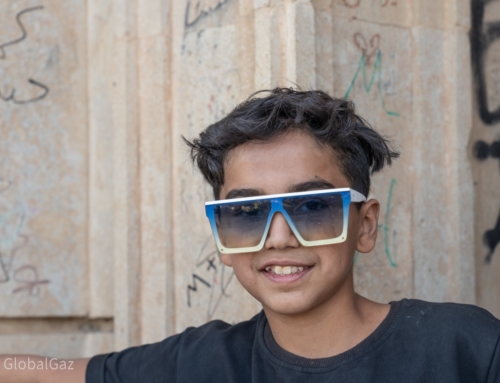
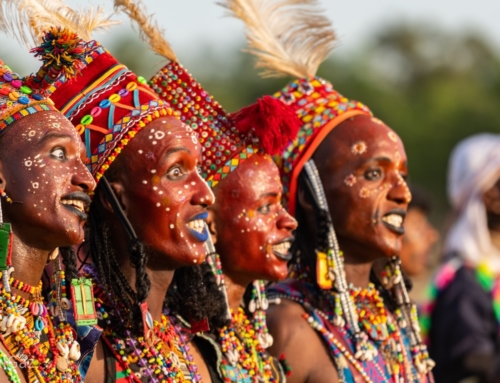
[…] Disaster tours are getting more popular lately. Visiting The Fukushima Disaster Area. […]
I like the fact that you stressed that the point that the point is not to revel in the misery or take selfies but to honor the victims and learn about the tragedy. It must be hard to visit sights like these and not leave with a heavy heart.
I understand there is a move afoot of bikini influencers in Chernobyl these days. Not the best look. And I read your post on things bloggers do that bug you 😉
[…] I had explored the Chernobyl Exclusion Zone, and this year when visiting Japan, I traveled to the Fukushima Disaster Area. This was a long day trip from Tokyo to areas which had been affected by the nuclear disaster. […]